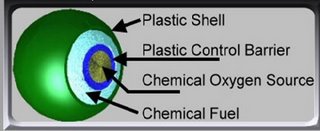Fastech 360z Bullet train JAPAN

East Japan Railway Co. unveiled the latest prototype of the next-generation bullet train, code-named "Fastech 360Z," to the press on Wednesday at its rolling stock laboratory center near Sendai in northern Japan. The six-car Fastech will aim to log the world's fastest speed for wheeled trains at 360 kilometers (224 miles) per hour during a normal journey. In comparison, France's TGV (Train Grande Vitesse) ordinarily runs at 300 kph. However, the TGV still holds the world record for wheeled trains for hitting 515 kph (320 mph). "The Fastech can run safely at more than 400 kilometers per hour but we do not have plans to test in the 500-kilometer range," company spokesman Makoto Yasuhara said. "We will start test runs at the weekend for about two years before we put it into commercial operations," he said.
http://www.dailytech.com/article.aspx?newsid=1216


